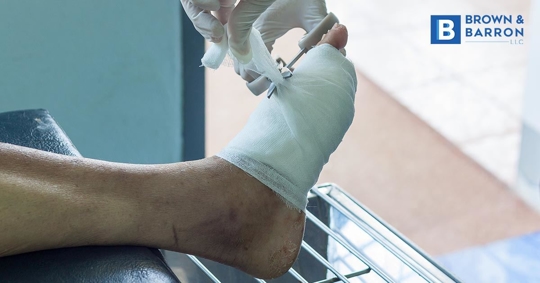People with diabetes are more likely to develop painful open sores on their feet, a complication called diabetic foot ulcers. Diabetic foot ulcers are one of the most common problems for people with diabetes, especially if it’s not well managed by the patient or their doctor. Proper glycemic control (i.e., tracking and maintaining safe blood sugar levels), quitting smoking, and good foot care are critical for avoiding foot ulcers for people with diabetes.
Here are 10 facts about diabetic foot ulcers
- How common are diabetic foot ulcers?
According to the International Journal of Endocrinology, diabetic foot ulcers occur in about 15% to 25% of people with diabetes. - What percentage of diabetic foot ulcers require hospitalization?
According to the University of Michigan Health System, of the people who get diabetic foot ulcers, 6% of them will require hospitalization. - Why do diabetic foot ulcers happen?
Elevated blood sugar, a common symptom of diabetes, damages the nerves and blood vessels over time. The nerve damage makes it harder for the diabetic to feel a wound to the foot, and the lack of blood flow makes it harder for the foot to heal and fight infection. When a cut on your foot won’t heal and you can’t really feel the pain that would normally tell you how bad it’s getting, that’s how a minor cut turns into a nasty diabetic foot ulcer. - Where do diabetic foot ulcers occur on the body?
Diabetic ulcers usually happen on the bottom of the feet. They are also common on the lower leg, but they can occur hands or skin folds as well. - Can a diabetic foot ulcer lead to amputation?
Yes. Diabetic foot ulcers are a common cause of amputation. According to a study in the Journal of Vascular Surgery, 28% of foot ulcers may result in some form of amputation. You can lose an entire foot or parts of the lower leg and/or foot, depending on the severity of the diabetic foot ulcer. According to the National Institute of Health, 1% of people with diabetes end up with an amputation. - How long does a diabetic foot ulcer take to heal?
Diabetic foot ulcers can take months to heal, depending on the size and severity of the ulcer. According to the New England Journal of Medicine, two-thirds of diabetic foot ulcers will take more than 1 year to heal, and the chance of it happening again in 5 years is about 65%. According to the Journal of Vascular Surgery, up to 25% of diabetic foot ulcers never heal, leading in many cases to amputation. - Can a diabetic foot ulcer involve bone?
Diabetic ulcers can lead to osteomyelitis (infection in a bone). If not treated properly, it can lead to gangrene (death of the bone tissue and nearby tissue). - Is amputation due to diabetic foot ulcer a bigger problem with some ethnic groups?
According to a study published by BMJ Open Diabetes Research & Care, “African Americans and Native Americans experienced 1.8–1.9 times higher risk of major amputation for diabetic foot ulcerations and/or diabetic foot infections than White Medicare beneficiaries.” - Are diabetic foot ulcers preventable?
It is estimated, according to a study in the National Library of Medicine by Bus & van Netten that up to 75% of diabetic foot ulcers are preventable. - How serious is the problem of diabetic foot ulcers?
According to a study called the Global burden of diabetic foot disease in the Lancet, “Every 20 seconds, an amputation occurs in the world due to diabetes.”
Patients with diabetes have a responsibility to make healthy decisions to reduce their chance of diabetic foot ulcer, get medical attention when a diabetic foot ulcer develops, and follow their medical professionals’ advice to manage the healing process. In some cases there is medical mismanagement that leads to diabetic foot ulcers becoming more severe, which can mean amputation and disability for the patient. If you or a loved one had a diabetic ulcer that led to an amputation, it is wise to investigate and ensure that the medical best practices were followed. This process is done by contacting a legal professional. For a free, no-obligation review of your situation, contact Brown & Barron online or call 410-346-0206.


